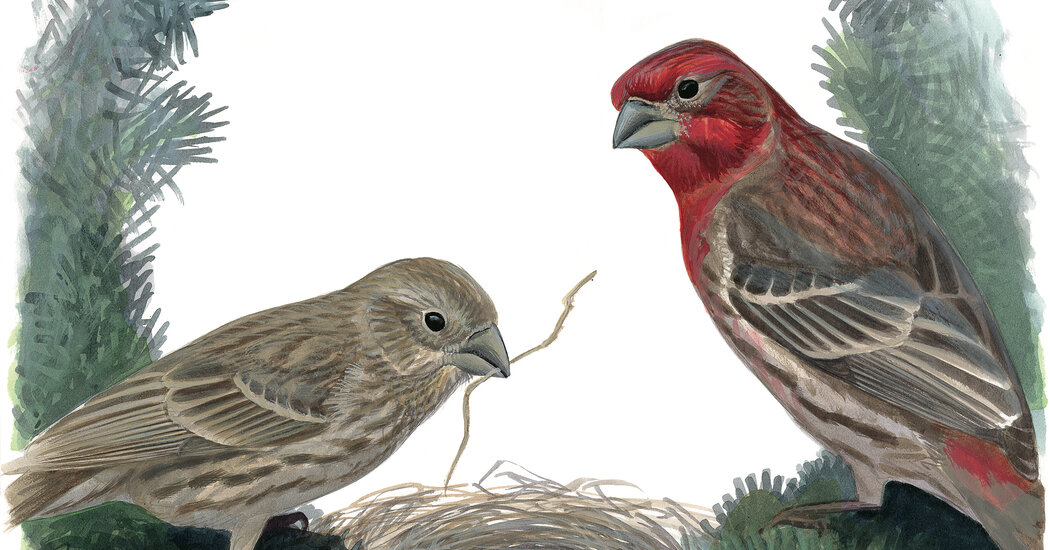The Birds’ Guide to Surviving Winter: Essential Tips and Tricks
Winter poses many challenges for birds. Cold temperatures, scarcity of food, and harsh weather can be tough.
Birds have fascinating ways to survive the winter. They adapt, migrate, and make the best of their environment. Understanding these strategies can help us appreciate their resilience. From finding food to keeping warm, birds use clever tactics to get through the season.
This guide reveals the secrets of their winter survival. You’ll learn how they cope and what we can do to support them. Stay tuned to uncover the amazing world of birds during winter.

Credit: onlyinark.com
Preparing For Winter
Winter brings unique challenges for birds. Cold temperatures and scarce food can make survival tough. Birds have developed incredible strategies to cope with these harsh conditions. Understanding these strategies can help us appreciate their resilience. Let’s dive into some of the key ways birds prepare for winter.
Migration Strategies
Many birds migrate to warmer areas during winter. This helps them find food and avoid freezing temperatures. Birds fly thousands of miles to reach their destination. Some species travel in large flocks for better protection. They use the sun, stars, and Earth’s magnetic field to navigate.
Here are some common migration strategies:
- Short-distance migration: Birds move to nearby areas with more food.
- Long-distance migration: Birds travel to different continents for a milder climate.
- Partial migration: Only some birds in a species migrate, while others stay.
Storing Food
Some birds stay in their habitat and store food to survive winter. They gather and hide seeds and nuts in various places. This behavior is called caching. Birds have excellent memory to find their hidden food later. They use trees, bushes, and even the ground for storage.
Here are a few birds known for storing food:
| Bird Species | Food Stored |
|---|---|
| Chickadees | Seeds, insects |
| Nuthatches | Seeds, nuts |
| Jays | Acorns, nuts |
By understanding these incredible strategies, we can better appreciate the challenges birds face during winter. Each adaptation is a testament to their resilience and ingenuity.
Finding Shelter
Winter presents many challenges for birds. One of the biggest is finding shelter. Birds need to stay warm and safe from predators. This guide will help you understand how birds find shelter during the cold months.
Natural Habitats
Many birds seek refuge in natural habitats. Dense forests offer great protection. Trees and bushes provide natural insulation. Birds can hide from predators here too. Some birds use tree cavities. Woodpeckers create these holes. Other birds use them once abandoned. Evergreen trees are another favorite. Their thick needles shield birds from cold winds.
Man-made Shelters
Birds also adapt to man-made shelters. Barns and sheds provide warmth. These buildings are usually dry and protected. Some birds nest under roofs. This gives them extra warmth. Birdhouses are another option. These small structures mimic tree cavities. They offer a cozy spot for smaller birds. You can help by setting up birdhouses in your yard.
Adapting Diets
Winter poses many challenges for birds. One of the most significant is finding enough food. Birds must adapt their diets to survive the cold months. This requires changes in what they eat and how they find food.
Foraging Techniques
Birds use different foraging techniques to find food in winter. Some birds peck at tree bark to find insects hiding inside. Woodpeckers are experts at this. Other birds search the ground for seeds and nuts. They often use their beaks to move leaves and snow aside. Some birds even follow larger animals to find scraps of food.
Dietary Changes
Birds often change their diets to match the season. Insects become scarce in winter, so many birds switch to eating seeds and berries. Some birds also eat more fat-rich foods. This helps them stay warm. Suet, a type of animal fat, is a favorite for many species. Birds also visit feeders more often in winter. This provides them with a reliable food source.

Credit: dnyuz.com
Staying Warm
The cold months can be tough for birds. They need to stay warm to survive. Birds have unique ways to keep their bodies warm. Let’s explore some of these methods.
Feather Maintenance
Birds rely on their feathers for insulation. Clean feathers trap warm air close to their bodies. Birds preen to keep their feathers clean and in good condition. Preening involves using their beaks to remove dirt and parasites. They also spread oil from a gland near their tail. This oil helps keep feathers waterproof.
Huddling Behavior
Some birds gather in groups to share body heat. This behavior is called huddling. Birds huddle together in dense clusters. This reduces heat loss and keeps them warmer. Small birds, like chickadees, often use this technique. They perch close to each other on branches or in tree cavities.
Conserving Energy
Winter can be harsh for birds. They need to conserve energy to survive. Cold temperatures and scarce food make it tough. Birds use various strategies to save energy and stay warm.
Minimizing Movement
Birds reduce their activity to save energy. They move less and rest more. This helps them conserve precious calories. During winter, birds avoid unnecessary flights and long journeys. They stay closer to food sources and shelter. This strategy helps them survive the cold months.
Efficient Flight
When birds fly, they do so efficiently. They use less energy by gliding and riding on wind currents. Birds also fly in formations like the V-shape. This technique reduces air resistance. It helps them save energy and cover long distances. Efficient flight is essential for their survival during winter.
Avoiding Predators
Winter can be harsh for birds, especially with predators lurking. Surviving the cold months involves more than just finding food and warmth. Birds need effective strategies to avoid becoming prey. This guide covers essential techniques birds use to stay safe from predators during winter.
Camouflage Techniques
Many birds rely on camouflage to blend into their surroundings. Snowy owls, for example, have white feathers that merge with snowy landscapes. This makes them almost invisible to predators.
Some birds change their plumage with the seasons. For instance, the willow ptarmigan’s feathers turn white in winter. This seasonal adaptation helps them stay hidden from foxes and hawks.
Other birds use natural elements to conceal themselves. Treecreepers, for example, have brownish feathers that blend with tree bark. They often freeze in place to avoid detection.
Group Defense
Birds often form groups to enhance their safety. Flocking together confuses predators and reduces individual risk.
Starlings are known for their murmurations, where thousands of birds move in unison. This synchronized movement creates a mesmerizing spectacle and makes it hard for predators to target a single bird.
Geese and ducks often stay in flocks, especially during migration. Grouping together allows them to keep watch for predators. One bird can alert the group if danger approaches.
Birds like crows and jays use mobbing tactics. When a predator is spotted, they call others to join and harass the threat. This collective effort can drive predators away.
| Group Defense Techniques | Description |
|---|---|
| Flocking | Moving in large groups to confuse predators |
| Murmurations | Synchronizing movements to create a confusing spectacle |
| Mobbing | Harassing predators collectively to drive them away |
Understanding these techniques helps us appreciate how birds survive winter. Their adaptations are fascinating and essential for their survival.
Health And Safety
Winter can be a tough season for birds. Ensuring their health and safety is crucial. Birds face many challenges, including cold weather and limited food. These challenges can affect their overall well-being. This section will discuss important aspects of health and safety for birds during winter.
Disease Prevention
Birds can catch diseases easily during winter. Keeping their environment clean helps prevent this. Regularly clean bird feeders and water sources. Disinfect them to remove harmful bacteria. Fresh food and water are essential. Stale or contaminated items can make birds sick.
Limit bird crowding to reduce the spread of illness. Spread out feeders and water sources. This helps birds keep their distance from each other. Watch for signs of disease. Sick birds may look puffed up or move slowly. If you notice these signs, take action quickly.
Injury Recovery
Injuries can occur more often in winter. Slippery surfaces and harsh weather can cause falls. Birds may hurt their wings or legs. Create safe spaces for them to land and rest. Use branches and perches with good grip. This helps prevent falls.
If you find an injured bird, handle it with care. Keep it warm and calm. Contact a wildlife rehabilitator for help. Do not try to treat the bird yourself. Proper care is important for recovery. A professional can provide the best assistance.
Human Assistance
Winter can be challenging for birds. They often struggle to find food and shelter. Human assistance can make a big difference. By providing food and safe environments, we can help birds survive the cold months.
Providing Feeders
Set up bird feeders in your garden. Fill them with seeds, nuts, and suet. These foods are rich in energy. Birds need extra energy to stay warm. Place feeders where birds feel safe. High places away from predators are best.
Clean feeders regularly. Dirty feeders can spread disease. Use warm water and mild soap. Rinse well and let them dry. A clean feeder keeps birds healthy and happy.
Creating Bird-friendly Environments
Plant native trees and shrubs. They provide natural food sources. Berries and seeds are essential for birds. Evergreen trees offer shelter. Birds can hide from bad weather and predators.
Leave some fallen leaves in your yard. They are home to insects. Birds eat these insects for protein. A messy garden can be a bird’s paradise.
Provide fresh water. Birds need to drink and bathe. Use a birdbath or shallow dish. Change the water often. Keep it from freezing. A heated birdbath is ideal in cold climates.

Credit: www.wingscapes.com
Frequently Asked Questions
How Do Birds Keep Warm In Winter?
Birds keep warm by fluffing their feathers to trap heat. They also seek shelter in dense foliage or cavities.
What Do Birds Eat In Winter?
In winter, birds eat seeds, berries, and insects. Some species also rely on bird feeders for extra sustenance.
Do Birds Migrate To Survive Winter?
Many bird species migrate to warmer regions during winter. However, some adapt to cold weather and stay put.
How Can I Help Birds In Winter?
You can help birds by providing food and fresh water. Installing birdhouses offers them shelter from harsh weather.
Conclusion
Winter can be tough for birds. Yet, with these tips, they can thrive. Provide them with food, water, and shelter. Keep feeders clean to prevent disease. Offer high-energy foods like seeds and suet. Create safe spaces from predators. Ensure water sources remain unfrozen.
By following these steps, you help birds survive winter. They will visit your backyard more often. Enjoy watching them flourish through the cold months. Happy bird-watching!
Hello Dear, I'm Poli Kolymnia, owner of many birds (including budgies).
With a deep passion for these feathered companions, I'm here to share my expertise and extensive knowledge on birds care.
My articles cover essential topics like diet, housing, care, and health, providing practical tips to help you create a happy and thriving environment for your birds.





